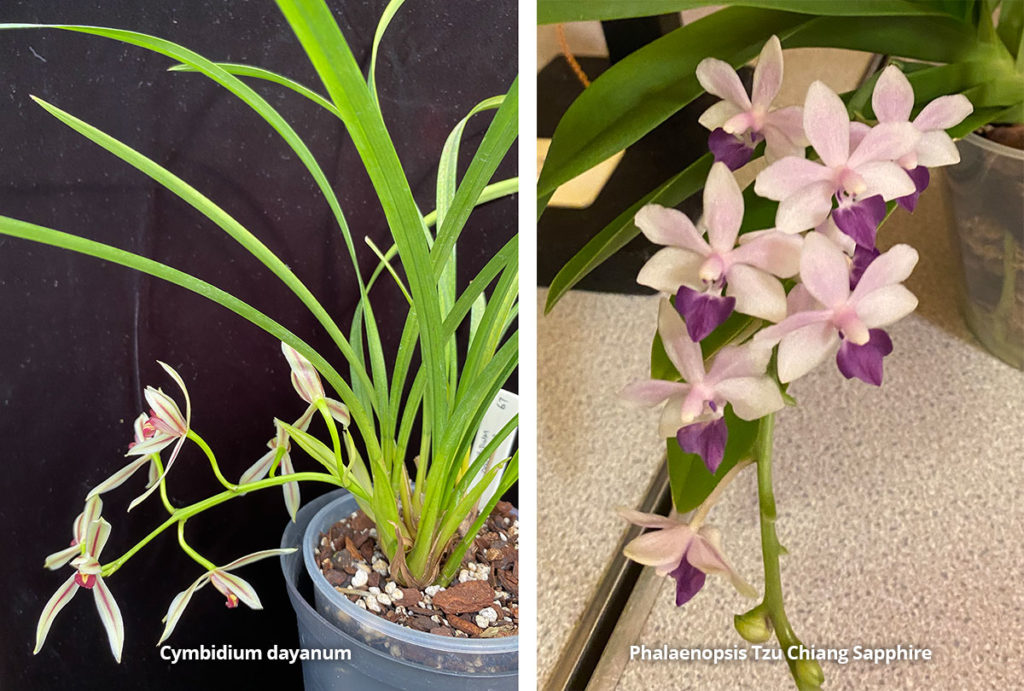A very well attended meeting welcomed Zsuzsanna Serer from Spicesotic Plants who gave a talk on ‘Dracula and Bulbophyllum’. These two distinct genera gave an interesting contrast, the former being cool growing species from South America and the latter being mainly found in the warmer climates of South east Asia.
The genus Dracula, commonly known as the ‘Monkey-faced orchid’, was first assigned by Reichenbach as Masdevallia in 1872 but established as Dracula by Luer in 1978. The name means “dragon mouth”, having no association with Bram Stoker’s creation.
Rather than using slides Zsuzsanna had brought along flowering examples of several species for us to examine while she described the growing conditions for each of them. Interestingly the plants were grown in sphagnum moss in open mesh to keep the roots cool.
Bulbophyllum were a complete contrast. Most of the genus are scented and range from a sweet perfume to the downright malodourous. Several of the examples shown were grown on bark, replicating their epiphytic nature. Many Bulbophyllum are pollenated by carrion flies and their flowers have labellum that resemble raw meat. Some of these include Bulbo nymphopolitanum, mildly scented, to Bulbo phalaenopsis and Bulbo beccarii which has been described as smelling like a herd of dead elephants!
Zsuzsanna had brought with her a wide selection of plants for us to purchase which provided an interesting conclusion to the evening.
Table Show
Actually two winners this month with the honours shared between Lorna Blackmore’s Phalaenopsis Tzu Chiang Sapphire and Bryan Adam’s Cymbidium dayanum.
Lorna’s Phalaenopsis hybrid was registered by Tzu Chiang Orchids in 2006. Sporting a spike of 7 flowers their soft lilac colour showd the influence of Phal. Violocea in its ancestry.
Bryan’s Cymbidium dayanum is a species widespread in Asia, from India through to Japan and everywhere in between. It apparently has a wide temperature range but I suspect Bryan grows his plant under intermediate conditions. The species was named for John Day, a noted amateur grower and botanical artist of the 19th century.

